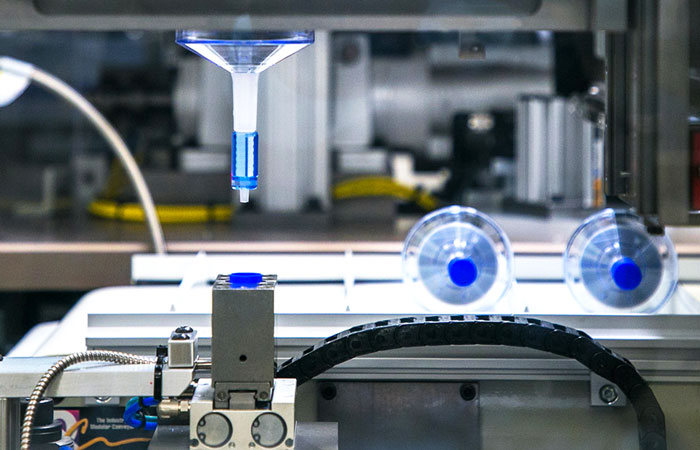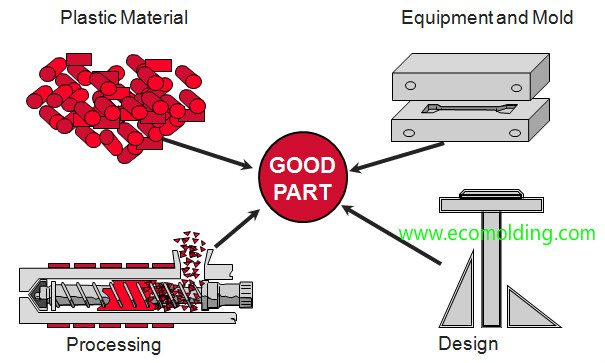The Effect of Plastic Injection Molding on Lowering Production Expenses and Waste
The Effect of Plastic Injection Molding on Lowering Production Expenses and Waste
Blog Article
Recognizing the Fundamentals of Plastic Injection Molding Processes
Plastic injection molding serves as a cornerstone of modern-day manufacturing, supplying a methodical approach to producing complex elements with accuracy. This procedure not only includes the fundamental actions of melting and infusing products into mold and mildews but likewise involves a nuanced understanding of various influencing factors, such as temperature level and pressure. As sectors significantly require effectiveness and high quality, the complexities of this methodology end up being extra critical. Exploring these crucial aspects could expose how even minor changes can bring about substantial renovations in manufacturing results, increasing concerns regarding the possibility for development in this established procedure.
What Is Plastic Shot Molding?
Plastic injection molding is a commonly used production procedure that transforms thermoplastic and thermosetting materials right into accurate and complicated shapes. This method is preferred for its capacity to produce high quantities of the same components with exceptional accuracy, making it an important technique in different industries, including automotive, customer goods, and medical gadgets.
The process involves melting the picked plastic product and injecting it right into a mold and mildew under high pressure. The mold, made to the requirements of the desired part, allows the liquified plastic to form as it cools and strengthens. As soon as the product has actually solidified, the mold is opened, and the ended up component is expelled.
Plastic injection molding offers several benefits, consisting of reduced waste, uniformity in production, and the capability to include complex designs that might be challenging with other manufacturing methods. In addition, it supports a wide series of products, each giving distinct homes that can be tailored for certain applications. As markets proceed to innovate, plastic shot molding remains at the center, making it possible for the growth of innovative products that satisfy advancing customer needs.
The Injection Molding Process
The injection molding process is an innovative technique that involves several essential stages to create top notch plastic elements. Initially, plastic pellets are fed into a heated barrel where they are merged a viscous liquid. This molten plastic is after that infused under high stress right into a precision-engineered mold and mildew, which forms the material right into the preferred form.
As soon as the mold is filled up, the plastic is enabled to strengthen and cool, taking the shape of the mold and mildew cavity. Cooling time is essential, as it influences the cycle time and the final homes of the shaped component. After sufficient cooling, the mold and mildew opens up, and the completed element is expelled using ejector pins.
Materials Utilized in Injection Molding
Numerous products can be used in the shot molding procedure, each offering distinct residential or commercial properties that provide to certain applications. One of the most frequently utilized materials include thermoplastics, thermosetting plastics, and elastomers.

Thermosetting plastics, like epoxy and phenolic materials, undergo a chemical change during the healing procedure, leading to a rigid, stringent framework. These products are ideal for applications calling for high warmth resistance and architectural honesty, typically made use of in electric insulators and automobile components.
Elastomers, including silicone and rubber-based materials, offer adaptability and durability. Their unique residential properties make them suitable for applications that demand elasticity, such as seals and gaskets.
Additionally, specialty materials like bio-based plastics and compounds are getting grip for their ecological advantages and boosted efficiency characteristics, expanding the scope of shot molding applications in different markets. Recognizing the properties of these products is vital for picking the appropriate type for certain jobs.
Advantages of Shot Molding
Shot find out here now molding stands apart as a very effective production procedure that uses many advantages for generating intricate get rid of precision. Among one of the most significant advantages is the ability to develop detailed designs that would certainly be difficult or impossible to accomplish with various other techniques (Plastic Injection Molding). The process permits tight resistances and in-depth features, guaranteeing high-grade components
Furthermore, shot molding is understood for its quick production abilities, making it a perfect option for high-volume manufacturing. As soon as the mold and mildew is created, components can be created rapidly, lowering preparations and enhancing total productivity. This effectiveness not just decreases manufacturing prices yet likewise offers an affordable side on the market.
The versatility of products utilized in injection molding even more improves its charm. A large range of thermoplastics and thermosetting polymers can be used, allowing manufacturers to select products that ideal meet their details needs, consisting of toughness, flexibility, and heat resistance.
Additionally, the process minimizes waste, as excess material can often be recycled and reused. This sustainability facet adds to a minimized environmental effect, making injection molding a responsible production option. In general, the advantages of injection molding make it a favored method for lots of sectors.
Factors Impacting Product Quality
While various elements can affect product top quality in shot molding, comprehending these elements is crucial for achieving ideal outcomes. Key aspects include material option, refining parameters, and mold style.
Material selection plays a vital duty, as various polymers display one-of-a-kind residential or commercial properties that influence flowability, toughness, and thermal stability. Poor product option can bring about defects such as bending or incomplete filling.
Processing parameters, consisting of stress, temperature, and cycle time, have to be diligently managed. Variations in these settings can lead to disparities partly measurements and surface coating. For example, excessively high temperature levels may trigger destruction of the polymer, while inadequate pressure can lead to short shots.
Mold and mildew layout is equally crucial, as it determines the circulation of the molten plastic and the cooling process. Inadequately made molds might lead to irregular air conditioning rates, resulting in recurring stress and anxieties and dimensional mistakes.

Final Thought
Finally, plastic shot molding works as an essential production process that enables the efficient manufacturing of high-quality components. Mastery of the shot molding process, consisting of the understanding of materials and the impact of numerous variables on product high quality, is important for attaining optimal results. The advantages of this approach, such as cost-effectiveness and style flexibility, additional emphasize its significance throughout several markets, solidifying its standing as a recommended selection for high-volume manufacturing.
Plastic shot molding offers as a foundation of modern manufacturing, supplying a systematic approach to generating complicated components with accuracy.Plastic shot molding provides numerous advantages, consisting of decreased waste, uniformity in manufacturing, and the capacity to integrate complex layouts that might be challenging with various other making navigate to these guys techniques (Plastic Injection Molding). As markets proceed to innovate, plastic injection molding continues to be at the leading edge, allowing the growth of sophisticated products that meet developing customer demands
The shot molding process is an innovative technique that involves numerous essential phases to produce website link high-grade plastic parts.In conclusion, plastic injection molding offers as a vital production procedure that enables the efficient production of top quality elements.
Report this page